Basiscape Interview: Discussing 13 Sentinels: Aegis Rim
Basiscape has been responsible for various Vanillaware works, such as the PS4 re-releases of Dragon’s Crown and Odin Sphere: Leifthrasir. In their latest work, soon to be released in Western territories, Hitoshi Sakimoto and his team at Basiscape provide a gripping soundtrack to Vanillaware’s highly acclaimed 13 Sentinels: Aegis Rim.
In this interview with Basiscape, the team reflects on their recent work and how they brought the sci-fi visual novel/tactical strategy hybrid to life.
Interview Credits
Interview Subject: Hitoshi Sakimoto, Mitsuhiro Kaneda, Yoshimi Kudo, Rikako Watanabe, Yukinori Kikuchi, Masaaki Kaneko
Interviewer: Don Kotowski
Editor: Don Kotowski
Translation: Basiscape
Translation Editor: Derek Heemsbergen
Coordination: Basiscape
Interview Content
VGMO: Sakimoto-san and the rest of the Basiscape team, thank you so much for joining us today to discuss your work on 13 Sentinels: Aegis Rim. Before diving into the musical nitty-gritty, could you reflect on your experience working with Vanillaware? I’d like to know what excited you most about the game’s concept and how that led to you creating a soundtrack that is so distinct from your other Vanillaware compositions.
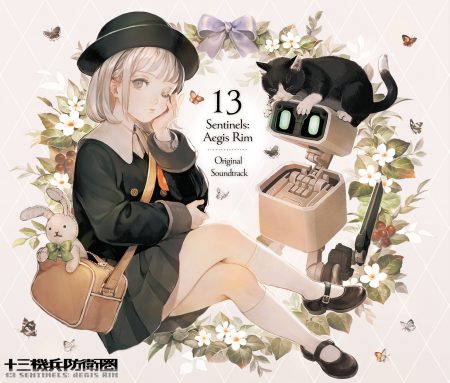
Hitoshi Sakimoto: I think everyone was surprised when the game concept first made its debut. It features a school setting mixed with mecha and science fiction, giving it a completely different atmosphere from Vanillaware’s previous games. I imagine many players will be surprised by just how different it is acoustically from the musical genres we previously dabbled in for other Vanillaware titles. Even so, I haven’t changed my directorial philosophy: Know when to make the music take center stage and when to let it fade subtly into the background.
Yoshimi Kudo: Thank you for giving me the opportunity to speak with you today! I’ll do my best to answer your question from a composer’s perspective. For some background, I previously worked with Vanillaware as a composer on Muramasa: The Demon Blade, Grand Knights History, and Odin Sphere: Leifthrasir. I also planned, directed, and contributed arrangements to the Muramasa: The Demon Blade arrange album.
The visuals in 13 Sentinels greatly inspired my work. As I composed, I remember visualizing the façade of an old wooden school building lit dimly by the western sun and the nostalgic streets of the Showa era [1926-1989, the period of Japanese history corresponding to the reign of Emperor Showa], while also taking into account the science fiction elements at the core of the game’s story. The game is thematically quite different from past Vanillaware titles I worked on, so I challenged myself to create brand-new sounds to match.
Mitsuhiro Kaneda: As for me, I’ve been involved with Vanillaware ever since GrimGrimoire. I also worked on Odin Sphere, [2008’s Japan-only Nintendo DS title] Kumatanchi, and Muramasa: The Demon Blade, after which I served as music director for Grand Knights History. While I have experience producing techno and electronic music for other games, 13 Sentinels marks the first time I dabbled in these genres for a Vanillaware title. I pored over the game’s design documents and kept its setting in mind as I toiled away on its soundtrack. I can’t say it was a stress-free experience, but I had a great time.
Rikako Watanabe: 13 Sentinels is the first Vanillaware game I’ve worked on, so I can’t make detailed comparisons with other titles, but creating a lot of thematically appropriate, functional music that conveyed the right “information” was a unique experience. In general, I actually think it’s okay to use music to color in a game’s world with information beyond what’s included in the scenario and visuals. However, in this case, I had to take extra care to ensure that my music didn’t generate any unexpected…static, we’ll call it, that interfered with the sheer amount of information 13 Sentinels is already conveying to the player.
Yukinori Kikuchi: When I joined Basiscape in 2017, Sakimoto asked me to be involved with the production of music for the Vanillaware titles under their purview. Thus, this is my first contribution to one of their titles, and I’m delighted to be part of a game that exudes such complexity and vibrant color. As a huge fan of science fiction, I couldn’t wait to see the game go gold.
Masaaki Kaneko: For my work on the game’s SFX, I basically wanted to do something totally unlike anything found in a previous Vanillaware game. The freedom I was afforded in shaping its sound direction helped me achieve that goal.
VGMO: Sakimoto-san, you were responsible for the main theme, “Brat Overflow.” How did the game’s concept shape its sound, and how did you decide where to implement its motifs throughout the rest of the soundtrack?
Hitoshi Sakimoto: “Brat Overflow” runs through the core of 13 Sentinels. I conceptualized it as a lean motif that can easily be plugged in where necessary, but one that wouldn’t obfuscate the game’s other key themes.
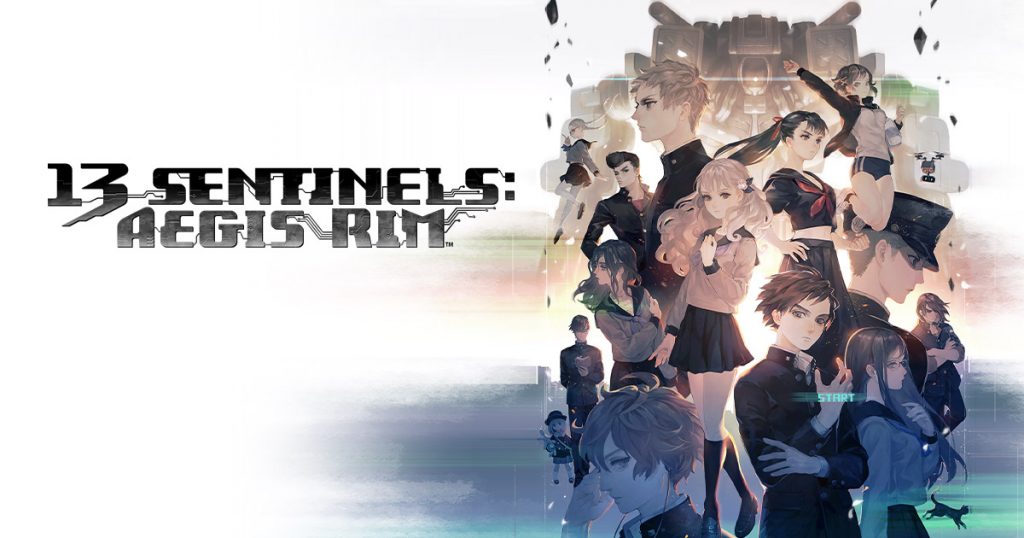
VGMO: Each of you were responsible for a portion of the battle tracks in the game. Could you each discuss your approach to creating these tunes and how you injected tension into your compositions? Please feel free to discuss any particular favorites you might have.
Hitoshi Sakimoto: My approach was to create strong melodies only where it was really necessary for impact. The rest of the music only contains a few minimal motifs. Overall, I think the sound works best when even the player is left a little mystified.
Yoshimi Kudo: Sakimoto’s direction for the battle songs indicated that he wanted the song to dynamically change depending on the progress of the game. “-(LEUCINE)-” was my first piece to take shape after I made a few trial tracks. Under this sort of direction, where each song is developed to flow dynamically, I needed to make the music maintain a single identity with enough variation throughout. In “-(LEUCINE)-,” the motif played with the synth sound in the early stage of the song is replaced by an orchestral performance in the second half. We used a common fill-in phrase in all the variations to create a sense of unity as a single song.
The process for melding the elements of unity and change differs with each song. For “-(LEUCINE)-,” I used a structure in which the song becomes faster as it expands to 4/4 tempo, 6/8 tempo, and then 4/4 tempo again in a metric modulation according to in-game conditions, all while presenting a complicated motif. On the other hand, with “-(ISOLEUCINE)-,” I simply changed the chords and tones while sticking to the same rhythmic pattern.
Mitsuhiro Kaneda: I made “-(LYSINE)-,” “-(PHENYLALANINE)-,” and “-(RIBOSE)-” to serve as battle songs. I composed “-(PHENYLALANINE)-” first, and it became the spindle around which all my other songs were wound. The idea here was to convey the tension of the characters’ first battle. Next, I made “-(LYSINE)-,” a song situated in the realm of cyberspace, and finally, I made the middle boss track, which is called “-(RIBOSE)-.”
Each piece of battle music and their corresponding victory jingles were to be prepared individually, but for the boss music track “-(RIBOSE)-,” I opted to give its victory jingle a deliberately less happy feeling to communicate a sentiment like “I was nearly defeated there, but I finally beat it!” It wasn’t the most popular choice within our team, and the tune almost ended up needing a retake.
Rikako Watanabe: I make a lot of orchestral music, and when I do, I have to think about the range of the instruments and the limitations of how they play—although that’s the fun part! I remained conscious of the movements of sounds that are not easily performed in that style of music.
Yukinori Kikuchi: My battle music sprung from a painterly technique wherein the emotions that run rampant in the mental world of battle—exuberance, excitement, aggression, stubbornness, discouragement—emerged in the melodies I dreamt up upon seeing development footage of 13 Sentinels. My favorite songs are “The One” and “-(HISTIDINE)-.”
“The One” was created as a spin-off piece of Sakimoto’s “Seaside Vacation.” I’m personally fond of this kind of atmospheric ballad music, so I had a lot of fun composing it. -(HISTIDINE)- is an electronic battle song that doubles as an expression of my true self.
Masaaki Kaneko: I enjoyed experimenting with systemic mechanisms to make the battle music more dynamic for players.
VGMO: The soundtrack has a nice blend of orchestral tunes, electronic tunes, and some hybrid tracks featuring both. What do you feel were particular challenges in creating a soundtrack that highlighted the appropriate mood while showcasing a vast array of musical styles?
Hitoshi Sakimoto: Of utmost importance is the final impression we leave and the path we take to get there. No matter what direction the project takes, I think it’s important to do everything I can to highlight and enhance the game’s drama so that it ends on a memorable note for all our players. To that end, the genre of music we create is less important than skilful layering and arrangement. I think we’ve succeeded in achieving that goal.
Yoshimi Kudo: In general, electronic music tends to focus on tone and rhythm; yet my emphasis on the chords, melodies, and development of each track resulted in music that can be arranged with a single piano. Some ambient tracks fall outside this specification, but I used electronic sounds throughout most of the project. I think that’s how we ended up with such a satisfying blend of tracks where orchestral and electronic sounds coexist.
Mitsuhiro Kaneda: It’s not unusual to find a style that fuses orchestra and techno music these days, but I paid particular attention to that balance for 13 Sentinels. “Go Sentinels, Go!” was the first piece I ever composed in that style. I also strove to make the melody stand out with that same balance so that neither the synthesizer nor the live instruments overpowered the other.
Rikako Watanabe: Both orchestral and electronic sounds are powerful enough to stand on their own, so I had to constantly check the overall balance when putting them together, making sure that one was not merely an ornament to the other, or just a substitute for a different tone. That being said, when I got tunnel vision on a particular song after working on it for too long, I found myself losing perspective. That’s when I’d have to give myself a break or work on some other songs in the meantime.
Yukinori Kikuchi: For electronic music to make an impact, the most important components to prioritize in its composition are the rhythm, tone color, and strong image motifs. Orchestral music, on the other hand, benefits most from having a variation of a single motif. Music that combines the two tends to be biased towards one of these characteristics. But thanks to music producer Sakimoto’s excellent guidance, I think the uplifting feeling of electronic sounds were incorporated well into 13 Sentinels’ soundtrack without compromising a sense of balance.
Masaaki Kaneko: It was a difficult task to adjust these tracks given that the composers and the contents are so diverse, but I think they ended up fitting together well. I was especially attentive to the battle music and worked hard to keep it consistent.
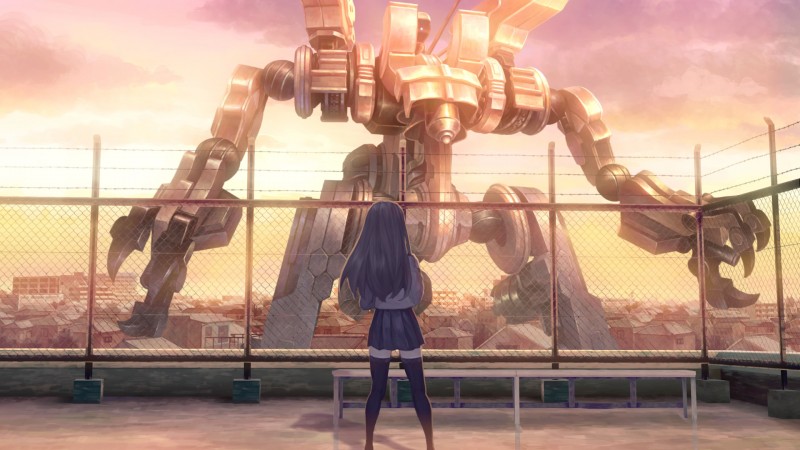
VGMO: Kaneko-san, the soundtrack for 13 Sentinels contains a blend of genres and styles. When mixing, what is your approach to mastering when a tune focuses on a single genre or style? When mixing music that features a combination of sounds, such as orchestra and electronic music, how do you approach it so that the end result highlights the various styles present in the tune?
Masaaki Kaneko: When I do the mastering for implementing the data into the game, balance is especially important to me. In order to place the music in a position that complements the voicework and other elements that should be in the foreground of the game, I’ll use techniques like adjusting a track so that the peak of a specific frequency does not appear.
Also, music is basically played at a lower volume in the game than it is while composing, so I try to make sure it sounds balanced even when the volume is turned down. Regardless of whether or not genres and styles are mixed, adjusting the volume and frequency balance to a certain level is the key to creating data suitable for implementing into the game.
VGMO: On that note, Kaneko-san, you were also responsible for implementing the sound into the game itself. How do you ensure that the music isn’t lost in a sea of SFX?
Masaaki Kaneko: For the adventure part, I carefully thought out when and where to use each track, arranged them accordingly, and made sure that the music always served a meaningful purpose. For the battle part, I controlled the voicework, music, and sound effects (volume and other real-time controls) meticulously to create as much harmony between them as possible.
VGMO: Aside from the aforementioned electronic and orchestral themes, 13 Sentinels also features music that highlights the mundanity of daily life (for instance, “Halcyon Days”). What were some of your inspirations for this type of music, and how do you think it impacted the non-battle portions of the game?
Hitoshi Sakimoto: It’s an introductory piece of music created to mislead the player somewhat, but it’s also emblematic of the hope that lives within all of us. In truth, this is exactly the sort of song we wanted to deliver to you, so I like to think that listening to us puts us all on that same peaceful wavelength.
Yoshimi Kudo: I composed “Halcyon Days.” It was inspired by memories of after-school meetups and the 1980s vibe presented in 13 Sentinels.
Fun fact: For one of my trial pieces, I tried submitting a song with a sad melody in the vein of popular Showa-era songs to really evoke that particular time period, but Sakimoto didn’t much care for it. Even with that imagery in mind, though, I tried to strike a good balance between that and the feeling of a large-scale science fiction adventure.
Mitsuhiro Kaneda: Sakimoto instructed me to generally keep the daily life music simple and punchy, though not every single track had to fit that mold. I really tried to picture myself in each and every scene, even moreso than I’d do for your average visual novel’s BGM. The environments depicted in the background of 13 Sentinels, which feature dazzling contrasts of light and shadow, influenced my compositions tremendously.
For “Feeling Left Out,” we tried to relay an introspective quality by recording a lot of live instrumentation for it. This stands in contrast “Mornin’, Sunshine!”, which I put all my strength into making bright and cheery for Fuyusaka, who was late for school.
Rikako Watanabe: Because I composed the daily life music at a very early stage of production, we didn’t have much information to go on at the time. I basically let my imagination run wild after seeing the visual of all the characters standing. I think the calm, blissfully mundane atmosphere we managed to create within the music serves as a good contrast for the drama that follows.
Yukinori Kikuchi: 13 Sentinels was very interesting because the daily life scenes were highly scripted, and it required some ingenuity in the selection of timbres between simple configurations and sounds. My intention was to design it so that the music would not interfere with the game’s text, but would rather aid in the player’s understanding of each scene.
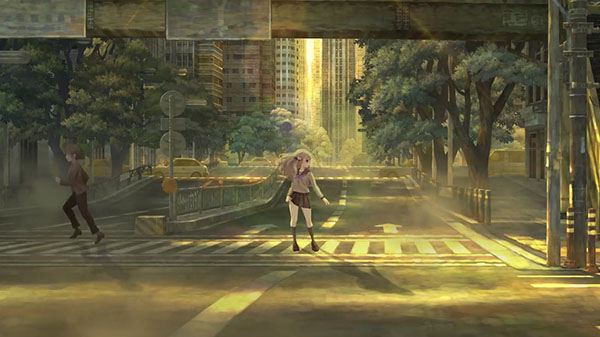
VGMO: Are there any tunes you haven’t discussed that you would like to shine the spotlight on?
Hitoshi Sakimoto: We had a song that was composed to create a Japanese Showa-era atmosphere, but unfortunately, it didn’t end up being implemented into the game. It was a good track, but we felt it would only elicit that familiar association from Japanese people, so we decided not to use it.
Yoshimi Kudo: “-[DEOXYRIBOSE]-” was the last song that I composed. I created it after I had finally come to understand the story and settings. This music has a multi-layered structure and a sense of mystery that deepens the further the players delve into the characters in 13 Sentinels. I wanted to paint a splash of musical color that resonates with the world as it creeps closer to the truth. In the most superficial sense, this song acts as a boss BGM meant to evoke an emotional response from the player. Take it a level deeper, though, and it’s a vehicle for conveying the feelings communicated through the story in 13 Sentinels. I’m especially grateful for anyone who receives them with open arms.
Mitsuhiro Kaneda: Although “Impending Doom” and “Deafening Silence” play atop an unembellished background, I worked very hard to make them beautiful with their disquieting nature.
Rikako Watanabe: I’d have to say “Cognitive Dissonance.” I suspect that most players will not recognize this song, but I composed it using notes I’ve always wanted to try.
Yukinori Kikuchi: For me, it’s “Sneaking Suspicions.” This track sprung from an unusual order to start a song with a short motif, as they wanted to use the intro as a sound effect. It has a mysterious feel to it. Check it out, if you would.
VGMO: Basiscape, thank you once again for taking the time to discuss the music of 13 Sentinels: Aegis Rim with us. Do you have any messages for the fans of your music or to those looking forward to the game’s English release this Autumn?
Hitoshi Sakimoto: I believe that for all of you, 13 Sentinels appears to be a cross-cultural science fiction school game, but in truth, it’s rooted in the universal theme of “living” salient to those of all cultural backgrounds, ages, and circumstances. This being a game and all, I really think it’s best experienced firsthand.
Yoshimi Kudo: Thank you for your enthusiastic interest in 13 Sentinels. The game and music alike are the result of many conquered challenges. We hope you enjoy it and look forward to hearing your feedback.
Mitsuhiro Kaneda: This is Vanillaware’s first science fiction work. I’m used to dabbling in the realm of fantasy to bring new adventures to our players. This time, I hope you fully immerse yourselves in our rich, fantastical sci-fi world. Thank you.
Rikako Watanabe: 13 Sentinels was made solely thanks to the wisdom and passion possessed by those at Vanillaware and their collaborators. I hope you will enjoy it to the fullest!
Yukinori Kikuchi: Thank you for always enjoying and supporting the music we produce here at Basiscape. Every one of our composers shared the same vision for this project and reflected that in their music, making this—in my opinion—a truly top-tier soundtrack. May you lose yourself in the story of 13 Sentinels and enjoy the music in its dramatic, dazzling context.
Posted on September 1, 2020 by Don Kotowski. Last modified on September 1, 2020.

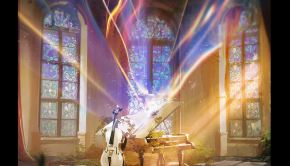
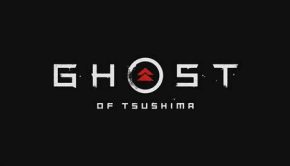












This was a great read, thanks! The soundtrack and game both are stellar so it’s awesome to get to hear all this!